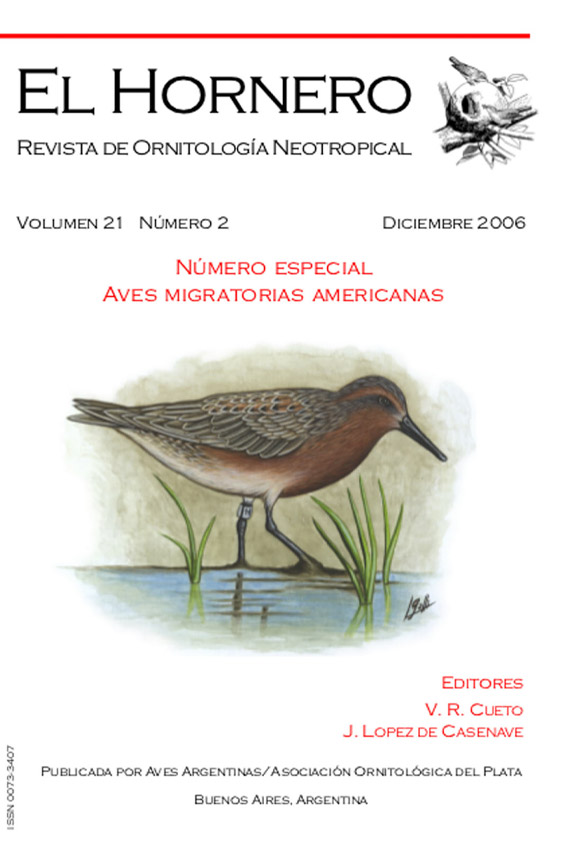Abstract
We examined the fasting migration hypothesis for Swainson’s Hawks (Buteo swainsoni) by estimating the length, duration, and speed of the migration between North and South America and measuring changes in their body masses at various times throughout the year. We instrumented 34 adult Swainson’s Hawks with satellite radios on their breeding grounds in western North America to determine the duration, length, and speed of the migration. Migrating south at 188 km/day, it took Swainson’s Hawks 51 days to complete their 13504 km migration to their austral summer grounds. Averaging only 150 km/day on their return migration, it took them 60 days to complete the shorter 11952 km migration back to North America. Adult male and female Swainson’s Hawks had average body masses of 872 g and 1131 g, respectively, when they departed from North America in September and their body masses upon arrival in Argentina averaged 759 g for adult males and 933 g for adult females, indicating they lost only an average of 18% of their body masses during migration. Adult male and female Swainson’s Hawks had body masses of 792 g and 1013 g, respectively, in February prior to their departure from Argentina and they returned to the breeding grounds in North America weighing 802 g and 1087 g in April. Our results indicate that the fasting migration model does not predict the actual body masses of Swainson’s Hawks during the migration season and it should be modified to account for either lower energy expenditures during migration or the possibility that the birds use a stopover strategy during migration, feeding and regaining, or maintaining, fat stores along the migration route.
References
ALI S AND RIPLEY D (1978) Handbook of birds of Indiaand Pakistan. Oxford University Press, Oxford
BERGER M AND HART JS (1974) Physiology and ener-getics of flight. Pp. 416–477 in: FARNER DS, KING JRAND PARKES KC (eds) Avian biology. Volume 4. Aca-demic Press, New York
BERTHOLD P (1975) Migration: control and metabolicphysiology. Pp. 77–128 in: FARNER DS AND KING JR(eds) Avian biology. Volume 5. Academic Press, New York
BERTHOLD P (1993) Bird migration: a general survey.Oxford University Press, Oxford
BLEM C (1980) The energetics of migration. Pp.175–224 in: GAUTHREAUX SA (ed) Animal migration,orientation, and navigation. Academic Press, New York

This work is licensed under a Creative Commons Attribution-NonCommercial 4.0 International License.





